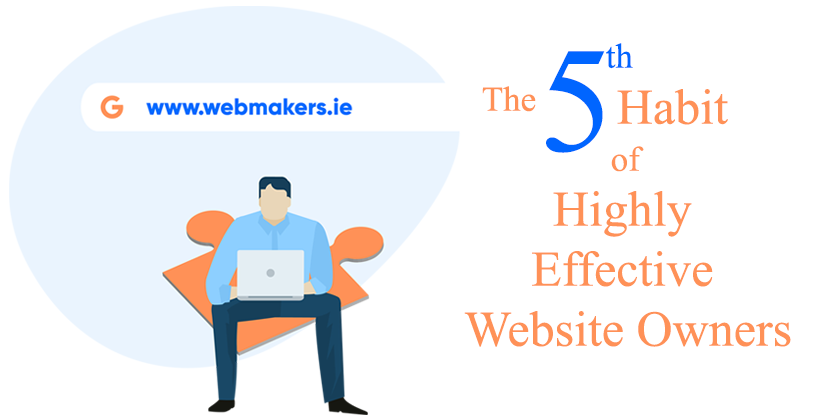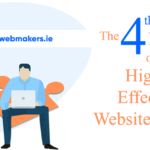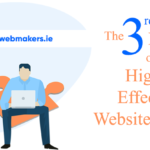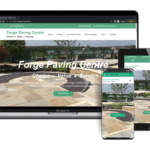
The 5th Habit of Highly Effective Website Owners
- Mark Sheehan
- November 3, 2022
- 4:08 pm
They Commit to Ad Spend…
You’ve built the high-performing site, you’re doing social and email newsletters, you’ve built up some great reviews and social proof – and all of that effort is really working well, but you want MORE for your business.
You’ve got ambitious goals and targets and so you want to accelerate your sales and revenue – so what else would a Highly Effective Website Owner do?
Great website SEO and content can only get you a certain amount of free, organic search traffic.
Great social media content can only get you in front of a certain amount of accounts and can gradually increase your engagement levels and followers.
However, building up website visitors and social media followers takes a lot of effort and is time-consuming.
So to speed up this whole process, Highly Effective Website Owners won’t rely solely on organic traffic built-up over time, they are willing to PAY so that they can reach a wider target audience and reach it quickly.
Every business should be spending a certain percentage, maybe between 2 and 5%, of their revenue on marketing and successful website owners observe this principle.
Where do they spend this money? Broadly speaking, they split it between Paid Search and Paid Social.
Paid Search generally means Google Ads and Pay per Click ( PPC ) campaigns.
You could be top of Google’s organic search results but you might still go unnoticed when someone performs a search.
This is because Google will put up to 4 Google Ads at the top of the search results page, followed by their map of local businesses followed by contact details for each of those local businesses and all of this comes before the organic search results are displayed.
So if you are not appearing on the map, then there may be as many as 8 competitor businesses appearing before you in the search results – and that’s assuming you are top of the organic search results and that there are no other businesses appearing ahead of you.
Given these challenges, paying Google to list you at the top of the search results page is an effective way of leapfrogging over some of your competitors and getting your ad in front of your target audience as prominently as possible.
Some people worry about the cost of Google Ads. But as with any form of advertising, ads are only ‘costly’ if they are not delivering profitable leads.
If ads can be created where the Cost per Click ( CPC ) and the amount of resulting leads convert into sufficient sales to cover the ad spend, then the CPC makes sense, whatever it costs.
For example, if your CPC is €1 and you need 10 clicks for every sale, then your cost of acquisition is €10.
If each sale only has a value of €10, then your Google Ads campaign isn’t profitable and doesn’t make sense.
However, if your cost of acquisition remains at €10 but if each sales delivers thousands of euro in revenue, then the cost of your Google Ads would make complete sense.
The thousands of euro might mean a customer’s lifetime value rather than an immediate sale value, depending on your overall business strategy.
A Google Ads campaign where the numbers make sense and which you can run profitably leaves you in the wonderful position of being able to leave the campaign permanently in place and where you simply adjust your ad spend based on your order books at any given point in time.
Need more sales? Then increase your ad spend and acquire more customers knowing the new customer sales revenue will justify the additional ad spend.
Order books full? Then reduce the ad spend or even pause the campaign fully until you need to increase your orders again. Alternatively, maintain the same levels of ad spend and see how you could deliver on the increased orders with additional staff or some form of business expansion.
In terms of Paid Social, your current social media presence and activity might mean you have a strong following but your organic social media reach will still always be limited.
Depending on the social media platform, your organic reach might be as low as 2% on Facebook, around 5% on LinkedIn and maybe 10% on Instagram which means that regardless of the number of followers you have, the overwhelming majority of them are not seeing your social media posts.
Most social media platforms go through the same business cycle – lots of free, organic reach at they try to grow the platform at the start. Then the organic reach starts to drop over time as the platform owners try to make money through promoted posts and so all organic reach gets squeezed.
Even for those with strong organic reach due to their high post engagement levels, they will probably still be mostly reaching their own existing followers and an audience who is already aware of them.
So to reach new people on the platform, Paid Social is generally needed.
In terms of running and managing social media promotions, the same ad principles apply – you are trying to create social media ad campaigns where the sales generated by the ads cover their cost.
If you can, then you have another source of leads for your business which you can control as and when you need to.
Increase your ad spend when you need to increase your leads. Reduce your ad spend should you want less new business.
Your Paid Search and Paid Social ads will differ in terms of how you target people.
With Google Ads, you will be choosing search terms and locations and when people from those locations use your selected search terms, they will potentially see your ads.
With social media promotions, you will be trying to identify your ideal target audience based on various demographics and then creating an ad campaign which serves up your content in front of them in the hope they then express interest.
This difference in how you target audiences between Paid Search and Paid Social has an impact in terms of the cost as you are not buying the same ad service.
Google Ads are being served to people who are consciously searching for what you have to offer and so are a ‘warmer’ audience. Your social media promotions are being put in front of people you hope may be interested based on some kind of audience profiling you’ve engaged in.
So Google Ads are likely to convert better in the short-term and so come with a higher cost.
However, your Paid Social can help you build up a loyal following which may benefit you over the medium-term while providing the social proof discussed in Habit no. 4.
Whether you go with Paid Search or Paid Social ( or ideally, both ), you are aiming for the same end result – being able to run ads where the cost of acquisition of a new customer is less than whatever their immediate or lifetime sales value is.
Primarily relying on organic search and social traffic leaves you in less control compared to paid traffic which can be turned on and off as and when you need to.
Highly Effective Website Owners understand this and so paid search and paid social advertising forms part of their website and sales strategy.
Only 2 to go, check back for Habit no. 6!
Mark
Recent News
News Categories
Contact Us
- hello@webmakers
- 046 906 0153
- Unit 1, Block A, Navan Town Centre, Abbey Road, Navan, Meath, C15 YCY5























